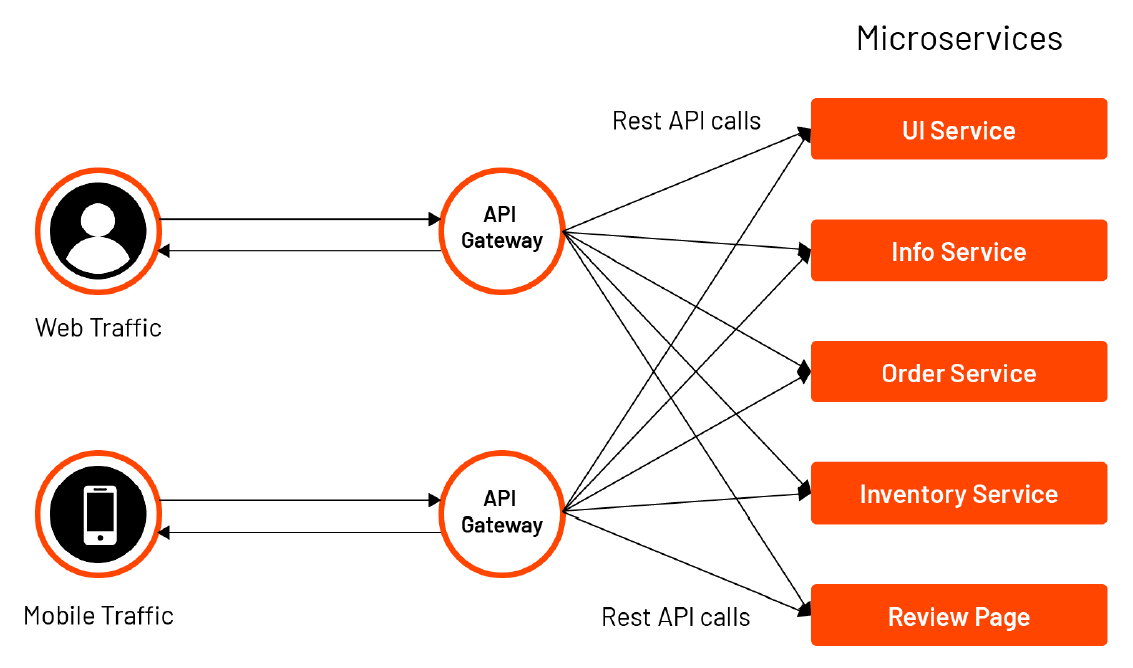An API Gateway is an essential component in a microservices architecture that acts as an entry point for client requests. It helps in managing, routing, securing, and optimizing API traffic between users and backend services.
🔍 Key Functions of an API Gateway:
- Request Routing — Routes API calls to appropriate services.
- Authentication & Authorization — Ensures security via OAuth, JWT, API keys, etc.
- Rate Limiting & Throttling — Prevents excessive usage and abuse.
- Load Balancing — Distributes traffic among multiple instances of a service.
- Caching — Stores frequent responses for faster performance.
- Logging & Monitoring — Tracks API usage and performance metrics.
💡 Why Use an API Gateway in Microservices?
In a monolithic architecture, a single application handles all requests, whereas in microservices, multiple independent services handle different functionalities. An API Gateway simplifies communication between clients and these microservices.
🌍 Benefits of API Gateways:
| Benefit | Description |
|---|---|
| 🛠️ Centralized Security | Handles authentication & authorization in one place. |
| 📈 Performance Optimization | Caches responses, reducing load on backend services. |
| 🌐 Simplified Client Interaction | Clients interact with a single API endpoint instead of multiple services. |
| ⌛ Rate Limiting & Monitoring | Prevents overuse and tracks API performance. |
| 🛢 Load Balancing | Distributes requests efficiently. |
| 🔧 Protocol Translation | Converts protocols like REST, GraphQL, gRPC, WebSockets, etc. |
🏢 API Gateway vs. Load Balancer
API Gateways and Load Balancers both distribute traffic, but they serve different purposes.
| Feature | API Gateway 🛠️ | Load Balancer 📈 |
| Routing Logic | Advanced (can inspect headers, modify requests) | Basic (routes based on IP, ports) |
| Authentication | Supports OAuth, JWT, API keys | No authentication features |
| Caching | Supports response caching | No built-in caching |
| Rate Limiting | Prevents abuse by throttling requests | No rate-limiting feature |
| API Composition | Combines responses from multiple services | Directly forwards requests |
| Protocol Support | REST, gRPC, WebSockets | Typically HTTP-based |
🌍 Popular API Gateway Solutions
Several API Gateway tools help in managing microservices efficiently.
| API Gateway | Features |
| Kong | Open-source, high-performance, scalable |
| AWS API Gateway | Fully managed, integrates with AWS services |
| NGINX | Lightweight, efficient for load balancing & caching |
| Apigee | Google Cloud API management platform |
| Traefik | Modern, dynamic routing, supports Kubernetes |
| Express Gateway | Node.js-based, easy integration |
🚀 How API Gateways Work (Flow Diagram)
- Client Request ➡️ API Gateway
- Authentication & Authorization (Verify API keys, OAuth, JWT)
- Routing & Load Balancing ➡️ Directs request to appropriate microservice
- Response Processing (Combining responses, data transformation)
- Caching & Rate Limiting (Optimized responses for better performance)
- Client Receives Response ✅
🚀 Final Thoughts
API Gateways are a must-have in any microservices architecture. They enhance security, scalability, and performance, making it easier to manage distributed services. Choosing the right API Gateway depends on your project’s needs, cloud environment, and scalability requirements.
If you found it meaningful or useful to you suggest us some topics on which we can bring up new content on Logic Decode for you.

